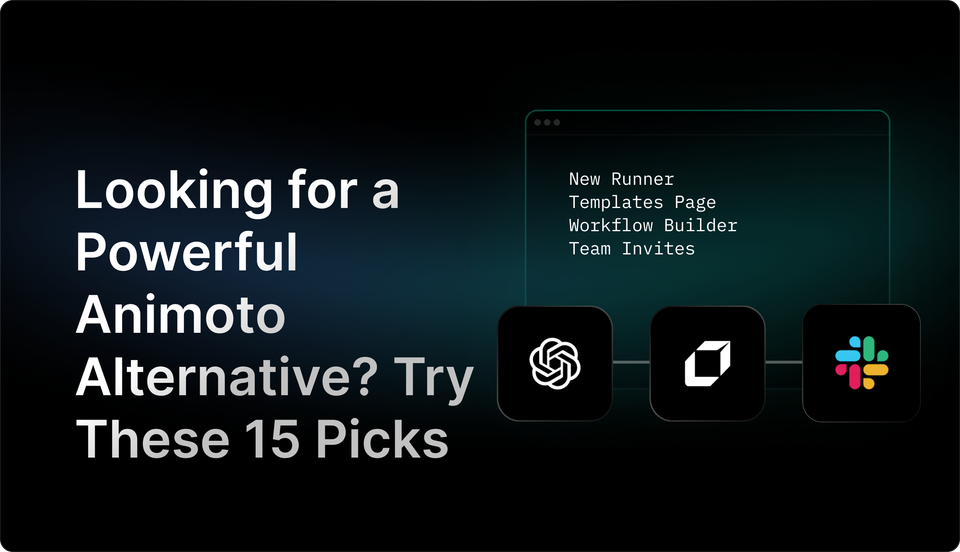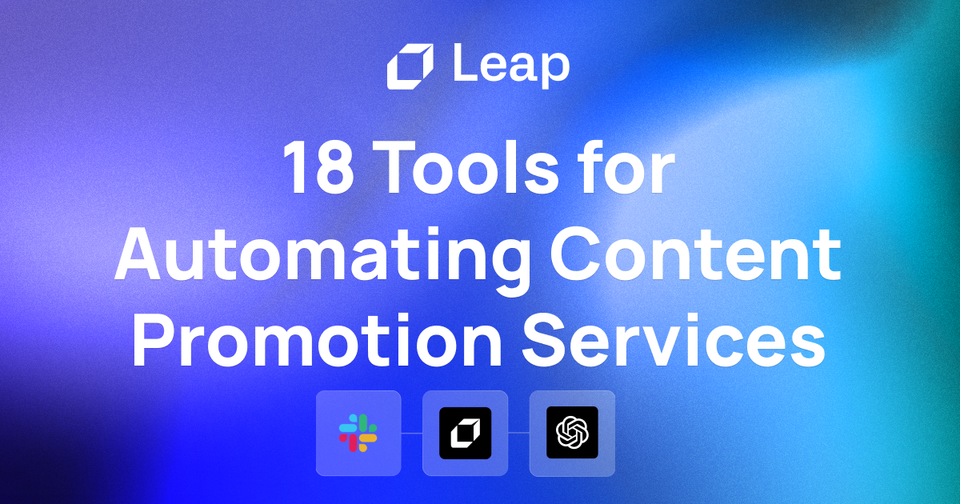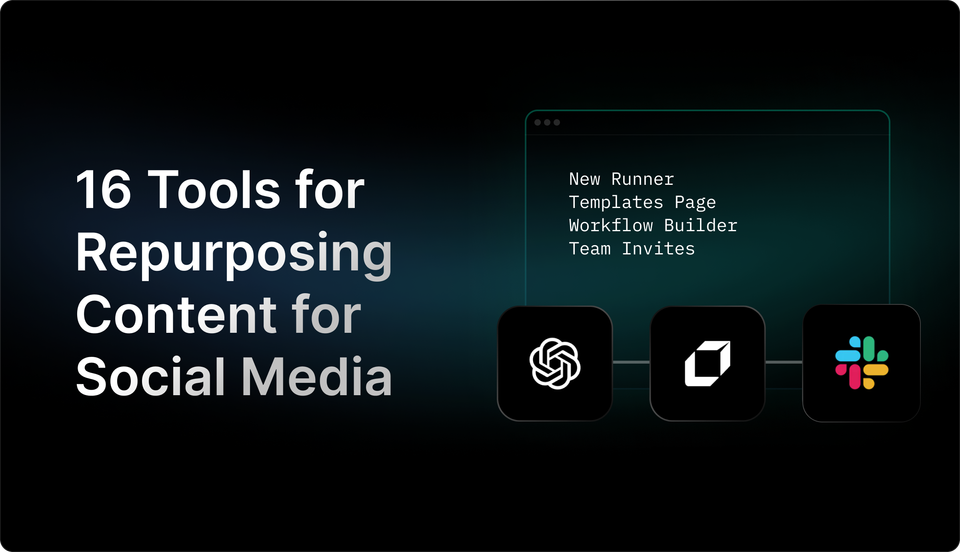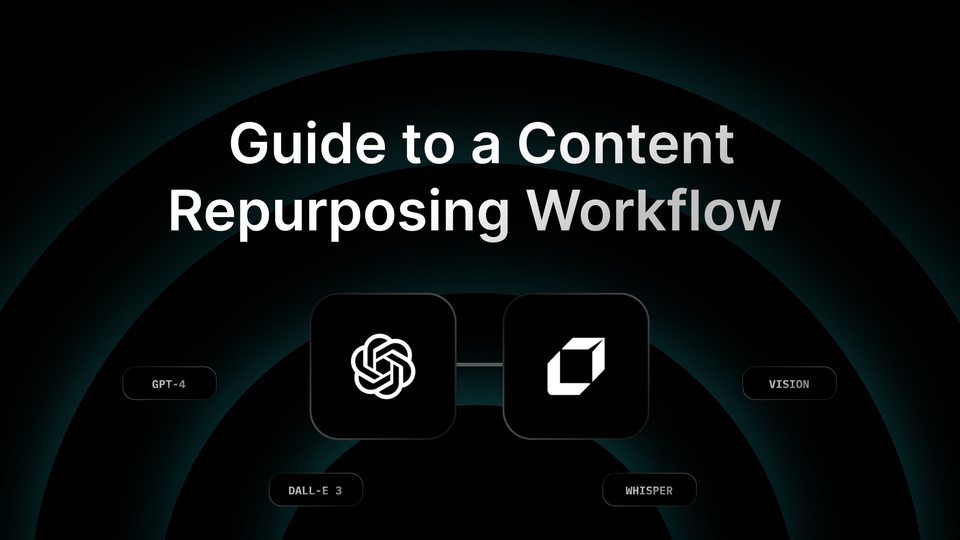9 Steps to Build a Winning Content Distribution Strategy
Build a successful content distribution strategy in just nine easy steps with this guide. Don't miss out on reaching your target audience!
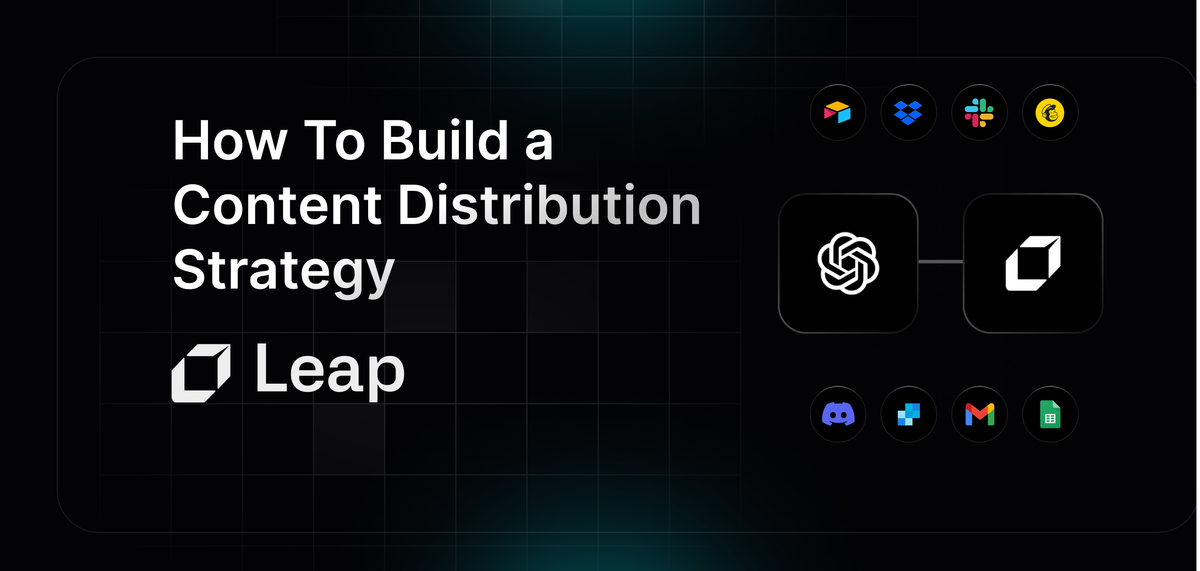
Content distribution is the secret sauce that can boost your content marketing efforts! Leveraging a variety of channels, content distribution ensures your content reaches your target audience, no matter where they are. It maximizes your ROI and amplifies your brand voice. It enables you to cut through the noise and stand out from the competition. So, why not take your content distribution game to the next level and elevate your brand? Let's delve into how to supercharge your content distribution strategy and ensure your content makes a splash online!
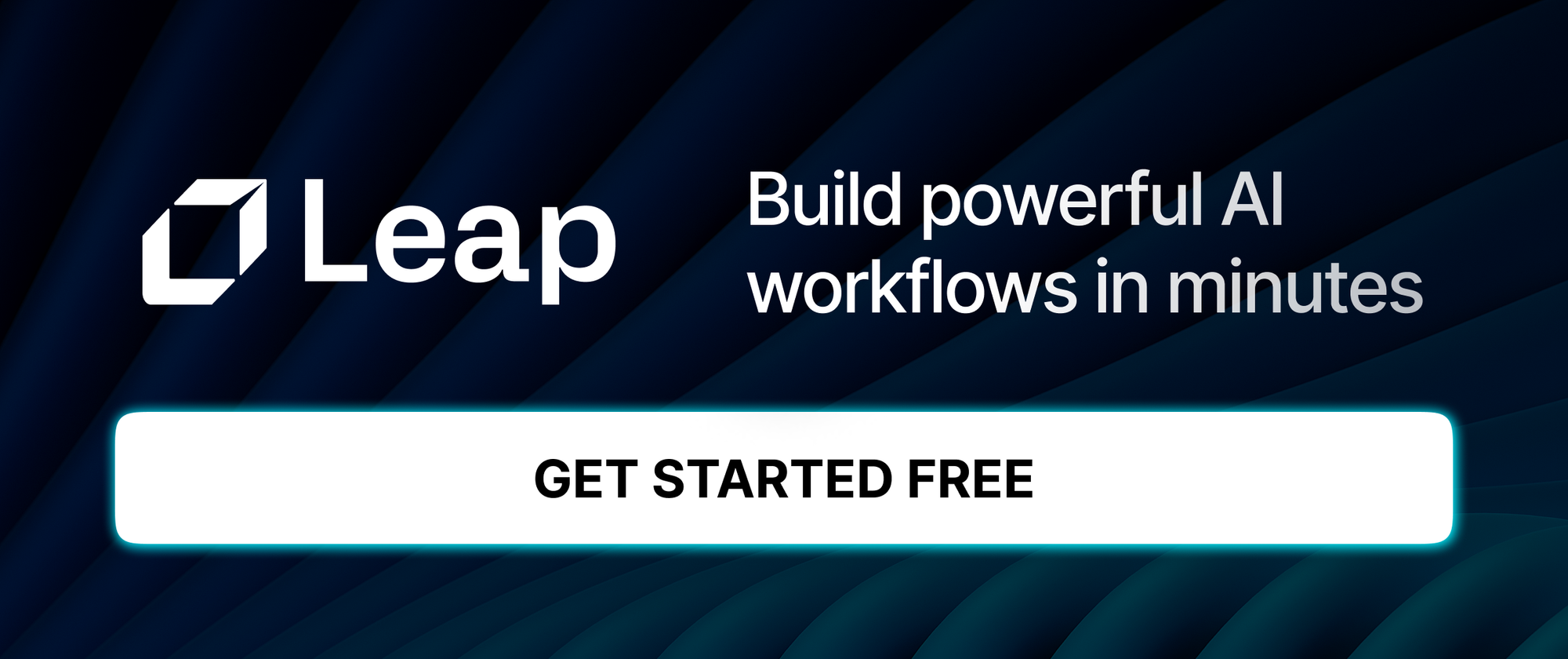
What Is Content Distribution and Why Is It Important

Content distribution is vital to the success of any content marketing strategy. As a content creator, it’s critical to have a plan in place to ensure your content is not only seen but also reaches the right audience. This is where content distribution comes in. By distributing your content effectively, you can expand your reach, increase brand awareness, and drive more traffic to your website. Ultimately, content distribution is the engine that drives content marketing success.
3 Types of Content Distribution Channels to Focus On

1. Owned Channels
Owned channels are ones that your brand has ultimate control over. When you own a channel, you decide what you publish and how you share it with the world.
Owned content channels can include your:
- Website and blog.
- Social media channels.
- Email marketing.
- Educational content.
- Podcasts.
2. Earned Channels
Earned channels are ones that your organization does not own or control. This form of content distribution is created and published by a third party.
Examples of earned content distribution can include:
- Mentions, shares, and user-generated content (UGC).
- Backlinks.
- Blog features and media coverage.
3. Paid Channels
Paid content distribution channels require that you pay to promote your content. Some of these channels are native to the platform you’ll be advertising on, like Twitter, Facebook or Instagram Ads, or Google Display Ads.
Types of paid media channels include:
- Ads
- Boosted social posts.
- Influencer marketing.
- Sponsored content or paid UGC.

Related Reading
- Content Promotion
- Content Repurposing
- Content Distribution Strategy
- Content Promotion Strategies
- How To Repurpose Content
- Content Distribution Platforms
How to Choose Between Content Distribution Channels

Paid and Organic Channels
Paid channels generate results quickly but require ongoing investment to sustain growth. The second you turn off the ad spend, you’ll see an immediate downturn in traffic, reach, and engagement. Organic channels, both owned and earned, take longer to see results. Those results will be sustainable and more stable.
Building a loyal fanbase doesn’t happen overnight. It takes time. The best way is to strike a healthy balance between paid and organic distribution channels.To simplify the process of choosing your optimal channels, we’ve prepared some comparisons below. There, you’ll find detailed information on what types of content are distributed on those channels, target KPIs, and other important metrics to keep track of.
Owned Content Distribution Channels
These channels are central to any brand. They are owned by you, and you alone have full control over the content. Why is this important? Because you can remove or update copy, tweak it to improve your performance, and keep tabs on your backlink profile and interlinking strategy. In addition, you can communicate directly with your “owned” audience and nurture these contacts, moving them down the funnel.
Earned Content Distribution Channels
If your earned platform is an influencer, industry thought leader, or top media publisher, getting traction here is worth it. You get your brand in front of a massive audience who’s already loyal to or engaged with that media channel.The downside is that these channels give you less control because the resource you publish your content on doesn’t belong to you. That means it’s harder to review outdated content, track its performance, and convert users into leads. Another issue is that the owner can decide to take down that content at any time.
Paid Content Distribution Channels
These channels might be called the most challenging ones, as using them requires careful ROI forecasting and budget planning. On the other hand, they offer you an opportunity to kickstart a promotional campaign in a day and get quick, measurable results affecting the bottom line
Important
Not all formats are a fit for all channels! You need to take the funnel stage into account. For example, a blog that drives a lot of organic traffic won’t necessarily bring you as many leads if you link to it from a paid ad.
9 Steps to Build a Winning Content Distribution Strategy

1. Research Your Target Audience
The first step in building a successful content distribution strategy is to research your target audience. This includes collecting demographic data from your website visitors, email subscribers, social media followers, and customers. By understanding who your audience is and what they like to consume, you can tailor your content distribution efforts to reach the right people.
2. Audit Your Content
Before diving into creating new content, it's essential to audit your existing content. This involves logging your content, assessing its impact, and identifying any gaps that need to be filled. By understanding what content you already have and how it's performing, you can make informed decisions about what to create next.
3. Choose Your Content Distribution Channels
Selecting the right distribution channels for your content is crucial. Depending on your target audience, you may choose to post on forums, social media, or traditional PR outlets. Ensure that your chosen channels align with your audience's preferences and behaviors. Don't forget to optimize your owned distribution channels, such as your blog, email newsletter, and social media profiles.
4. Decide on Your Content Types
After determining your distribution channels, consider what types of content you want to create. Many companies choose to publish blog posts and then repurpose them across other channels. Building a business blog is a good starting point, as it allows for easy repurposing and sharing.
5. Set Your Content Distribution KPIs and Goals
Establishing goals for your content distribution strategy is essential. Define key performance indicators (KPIs) and related metrics to track the success of your content. These could include metrics like traffic, engagement, impact, and sentiment. Setting SMART goals will help you measure the effectiveness of your distribution efforts.
6. Build an Editorial Calendar (and Include Distribution)
An editorial calendar can help you plan and organize your content distribution efforts. Create a schedule for when and where you'll distribute your content, keeping your team aligned and working towards common goals. An editorial calendar also provides a roadmap for your writers and editors to follow.
7. Create Your Content
Once you've done your research, audit your content, selected your channels, and set your goals, it's time to create your content. Consider using tools like Leap AI, AnswerthePublic, Canva, Vidyard, and Anchor to help with content creation. These tools can assist in creating diverse and engaging content for your audience.
8. Distribute and Market Your Content
After creating your content, it's time to distribute and market it. Follow your editorial calendar and use your chosen distribution channels to get your content out into the world. Be sure to optimize your posts for each channel and follow best practices for each platform.
9. Measure and Analyze Your Results
Keep a close eye on your content distribution results. Monitor your KPIs, metrics, and SMART goals to track the success of your strategy. Use tools like Google Analytics and social media analytics dashboards to measure and analyze your performance. Regularly review your results to identify areas for improvement and refine your strategy over time.
5 Popular Content Distribution Tools and Platforms

1. Website Traffic
Monitoring web analytics is crucial to measure the impact of content on website traffic. By reviewing visitor behavior, engagement, and pages viewed, I can optimize future distribution strategies. A rise in website traffic signifies that our content distribution strategy is effective, while a decrease signals that we need to adjust our approach.
2. Engagement Metrics
Tracking likes, shares, and comments on social media posts is key to evaluating the effectiveness of content and adapting distribution strategies. The level of engagement indicates how well the content resonates with the audience. Higher engagement rates indicate that content distribution strategies are working well and should be continued, while lower rates suggest that changes are needed.
3. Conversion Rate (CVR)
Conversion rate indicates the percentage of people who take a desired action on the website, such as subscribing to an email list, making a purchase, or downloading resources. By tracking CVR, I can understand how content influences user actions and modify content distribution strategies as needed.
4. Cost Per Acquisition (CPA)
CPA measures how much a conversion costs. This metric helps in determining the success of paid distribution channels and whether they are worthwhile. If the CPA is high, it may indicate that the content distribution strategy needs to be refined to ensure better results and a lower cost per acquisition.
5. Attention Metrics
Measuring attention goes beyond simple viewability. With new adtech developments, it’s now possible to track how much attention an ad or content is receiving from real users. Attention metrics is an emerging field, and keeping an eye out for opportunities to monitor attention can enhance content distribution strategies.
Related Reading
- Content Repurposing Workflow
- Repurposing Content For Social Media
- Content Promotion Services
- Video Content Distribution
- Animoto Alternative
- Social Media Distribution
- Content Repurposing Service
- Repurpose Video Content
- Paid Content Distribution
- Content Distribution Software
19 Tools for Measuring Content Distribution Success

1. Leap AI: The Power of Automation with AI
I'm excited to introduce you to Leap AI, a groundbreaking tool that harnesses the power of artificial intelligence to automate your work processes seamlessly. With Leap AI, you can create custom AI automations without the need for any coding skills.
This revolutionary tool allows you to connect your favorite tools with top-notch AI text, image, and audio models, supercharging your existing processes. From summarizing documents to AI call transcription, Leap AI provides a wide range of automation solutions. By leveraging Leap AI, you can streamline your workflows and take your productivity to the next level.
2. HubSpot: Your All-in-One CRM Solution
HubSpot is not just an ordinary CRM; it’s an all-in-one platform designed to meet the needs of businesses ranging from small startups to large enterprises. With HubSpot’s Marketing Hub, you can manage your email marketing campaigns, analyze content performance, create social posts, and even monitor your social networks. This comprehensive suite of tools helps you gain insights into your audience, ultimately enhancing your content distribution strategy.
3. Medium: Publish your Content to a Broader Audience
Medium is more than just a content platform; it is a community of readers hungry for engaging articles across various topics. By publishing your content on Medium, you can tap into a vast audience base and gain exposure for your brand. Whether you already have a blog or not, Medium can serve as a valuable addition to your content distribution strategy.
4. PR Newswire: Streamline Press Release Distribution
PR Newswire is a specialized platform that facilitates the distribution of press releases. By using PR Newswire, you can target journalists and media outlets based on specific criteria like industry, location, or topic. This tool simplifies the process of getting your content in front of the right audience, enhancing your brand visibility and credibility.
5. HARO: Connect with Journalists and Earn Media Coverage
Help a Reporter Out (HARO) is a unique platform that connects journalists with sources. As a source, you can respond to journalist queries and potentially get featured in articles, earning valuable media coverage for your brand. HARO is a powerful tool that can help you secure press mentions and backlinks through proactive engagement with the media.
6. ClickToTweet: Enhance Social Sharing of your Content
ClickToTweet is a handy tool that encourages readers to share soundbites of your content on Twitter with a single click. By creating shareable content soundbites, you can motivate your audience to promote your content effortlessly. ClickToTweet is a simple yet effective way to boost the social reach of your articles and engage with your followers.
7. GaggleAMP: Leverage Social Amplification for your Business
GaggleAMP is a social amplification tool that enables you to streamline content sharing across your employees' social networks. By aggregating your employees' social accounts, you can amplify your company's content and increase its reach. GaggleAMP is a valuable asset for businesses looking to enhance their social media presence and boost brand awareness.
8. AddThis: Simplify On-Page Social Sharing
AddThis is a user-friendly tool that facilitates on-page social sharing. By integrating AddThis on your website, you can empower your readers to share your content without leaving the page. This seamless sharing experience encourages more readers to distribute your content, ultimately driving traffic and engagement.
9. Mention: Monitor and Manage Social Media Mentions
Mention is a comprehensive social media monitoring tool that provides essential features like social media listening, publishing, and crisis management. By monitoring your brand mentions and social interactions, you can gain valuable insights into your content performance and audience engagement. Mention is an essential tool for managing your online reputation and maximizing the impact of your content.
10. SharedCount: Measure Social Media Engagement
SharedCount is a data-driven tool that enables you to track the engagement of your social media posts. By analyzing likes, shares, comments, and other metrics, you can gauge the performance of your content and identify areas for improvement. SharedCount empowers you to optimize your content strategy and create more engaging posts to captivate your audience.
11. Outbrain: Amplify your Content with Paid Promotion
Outbrain is a paid amplification tool that enhances the visibility of your content by displaying it under related articles. By setting up content campaigns with Outbrain, you can reach a broader audience and drive traffic to your website. Outbrain's extensive network includes reputable publications like The New York Times and Mashable, ensuring your content reaches high-quality readers.
12. WiseStamp: Maximize Email Signature Space for Content
WiseStamp is a clever email tool that allows you to promote your latest content through your email signature. By incorporating links to your articles in your email signature, you can leverage this often-overlooked space to drive traffic to your website. WiseStamp helps you make the most of every email you send, promoting your content effectively to a wide audience.
13. Google Business Profile: Enhance your Online Presence with Google
Google Business Profile is a free tool that empowers businesses to manage how they appear in Google Search and Google Maps. By utilizing this platform, you can optimize your business profile, post relevant updates, and engage with customers through reviews. Google Business Profile is an invaluable asset for businesses looking to enhance their online visibility and attract more customers.
14. LinkedIn: Leverage the Power of LinkedIn for Content Promotion
LinkedIn is a professional social networking site that offers businesses a platform to share content, connect with industry professionals, and engage with a targeted audience. By posting informative and educational content on LinkedIn, you can position your brand as an industry thought leader and drive engagement with your audience. LinkedIn is a powerful tool for content distribution, especially for B2B companies looking to reach a professional audience.
15. Facebook: Harness the Reach of Facebook for Content Distribution
Facebook is the largest social networking site globally, making it a valuable platform for businesses to distribute content. With nearly 3 billion monthly active users, Facebook offers a massive audience base to engage with. By leveraging both organic and paid content promotion on Facebook, you can increase brand visibility, drive traffic to your website, and generate leads for your business.
16. Instagram: Engage Audiences with Visual Content on Instagram
Instagram is a popular photo-based social media platform owned by Meta, Facebook's parent company. Similar to Facebook, Instagram enables businesses to share a variety of visual content, including photos, Stories, and videos. By leveraging organic and paid promotions on Instagram, you can captivate your audience with visually appealing content and drive engagement with your brand.
17. Prowly: Streamline PR and Media Relations with Prowly
Prowly is a comprehensive PR and Media Relations platform that centralizes all your PR activities in one place. With Prowly, you can find the right media contacts, send personalized emails to journalists, create press releases, and establish a journalist-friendly newsroom. This tool simplifies the process of managing your PR efforts, enabling you to connect with media professionals effectively and promote your content strategically.
18. Semrush ImpactHero: Optimize Lead Conversion with AI
Semrush ImpactHero is an innovative AI tool that utilizes advanced algorithms to measure the contribution of each page on your website to lead conversion. By leveraging AI-powered analytics, ImpactHero provides valuable insights into your content performance and user engagement. This tool enables you to identify high-performing pages, optimize your content strategy, and drive meaningful conversions for your business.
19. MeetCortex: Analyze Content Performance and Effectiveness
MeetCortex is an AI-powered content tool that evaluates the effectiveness of your content and its performance across different channels. By leveraging AI-driven insights, MeetCortex helps you understand how well your content resonates with your audience and identifies opportunities for improvement. This tool provides valuable data to enhance your content strategy, boost engagement, and drive better results for your business.
Tips for a Better Content Distribution Model

Paid and organic distribution channels
Paid channels like Google Ads and social media ads can help you reach a wider audience. Organic channels like SEO, social media, and email marketing can also help in driving traffic. Striking a balance between paid and organic channels that make sense for your brand and budget is imperative.
Collaborate with influencers and partners
Collaborating with influencers and partners can help you reach new audiences. Ensure that your partners align with your brand values and make sense for your audience.
Repurpose and recycle content
Repurposing and recycling your existing content into different formats and channels can save time and effort. You can turn a blog post into a video or a podcast into a blog post to ensure that your content reaches a wider audience.
Create shareable content
Make content that people want to share. People typically share content that makes them look good or helps others. Include social sharing buttons on your site and embed codes for easy sharing. Include a call to action that inspires your user to engage.
Tailor content to each platform
Adapt your content to the features and audience of the platform you’re posting to. This strategy will help you increase engagement and overall reach. Cross-platform campaigns involve content distributed across multiple platforms for one campaign.
Building backlinks
Backlinks from other reputable websites can help to increase organic reach and drive traffic to a business’s website. Create guest posts or other forms of content for other websites in the same industry to generate backlinks and establish the business as a thought leader in the industry.
Related Reading
- Content Distribution Companies
- Planable Alternatives
- Repurpose Alternative
- Repurpose Blog Content
- Content Promotion Tools
- Visme Alternatives
- B2b Content Distribution
- Socialpilot Alternatives
- Vidyo Ai Alternatives
- Content Distribution Services
- Meetedgar Alternatives
- Missinglettr Alternatives
- Lumen5 Alternative
Create Game Changing Automations Today With Leap’s AI Workflows
Leveraging AI to automate content distribution can be a game-changer for productivity and efficiency. Leap offers a powerful solution that enables you to supercharge your workflows with AI seamlessly integrated into your existing tools. With Leap Workflows, you can create sophisticated automations without the need for coding skills, empowering you to streamline your content distribution process.
Enhancing Content Distribution Efforts with Seamless AI Integrations
Integrating AI seamlessly with your content distribution efforts can revolutionize the way you work. Leap partners with industry-leading platforms like Zapier and Vercel to provide you with cutting-edge AI capabilities that enhance your existing tools. By tapping into the power of best-in-class AI models for text, image, and audio, you can unlock new possibilities for automating content distribution tasks.
Unleashing the Potential of AI for Diverse Content Distribution Needs
Leap's AI Workflows tool offers a wide range of functionalities to address various content distribution needs. Whether you need to summarize documents, translate voice conversations, transcribe calls, generate AI avatars and assets, automate SEO tasks, or streamline cold email creation and sending processes, Leap has got you covered. By automating these diverse tasks using AI, you can save time and focus on more strategic aspects of content distribution.
Seizing Endless Opportunities for Automation with Leap Workflows
The possibilities for automation are endless with Leap Workflows. By harnessing the power of AI to optimize your content distribution efforts, you can scale your operations and drive better results. Try Leap's AI Workflows tool for free today and discover how you can transform your workflow with intelligent automations that boost efficiency and productivity.
With Leap, you can take your content distribution to the next level and stay ahead of the competition.

